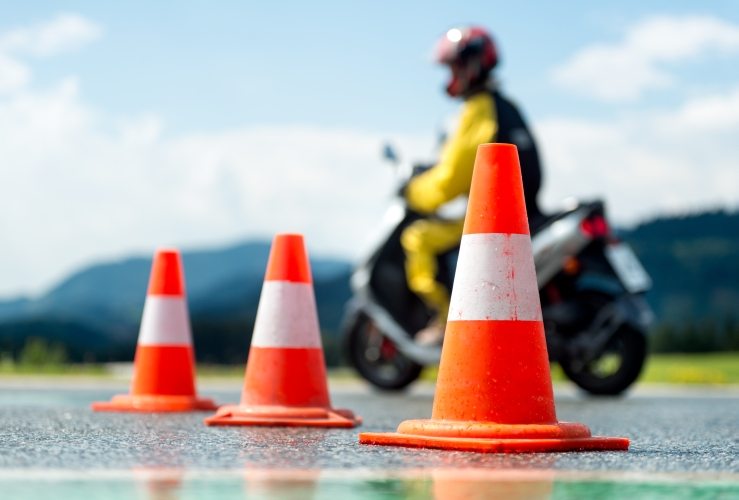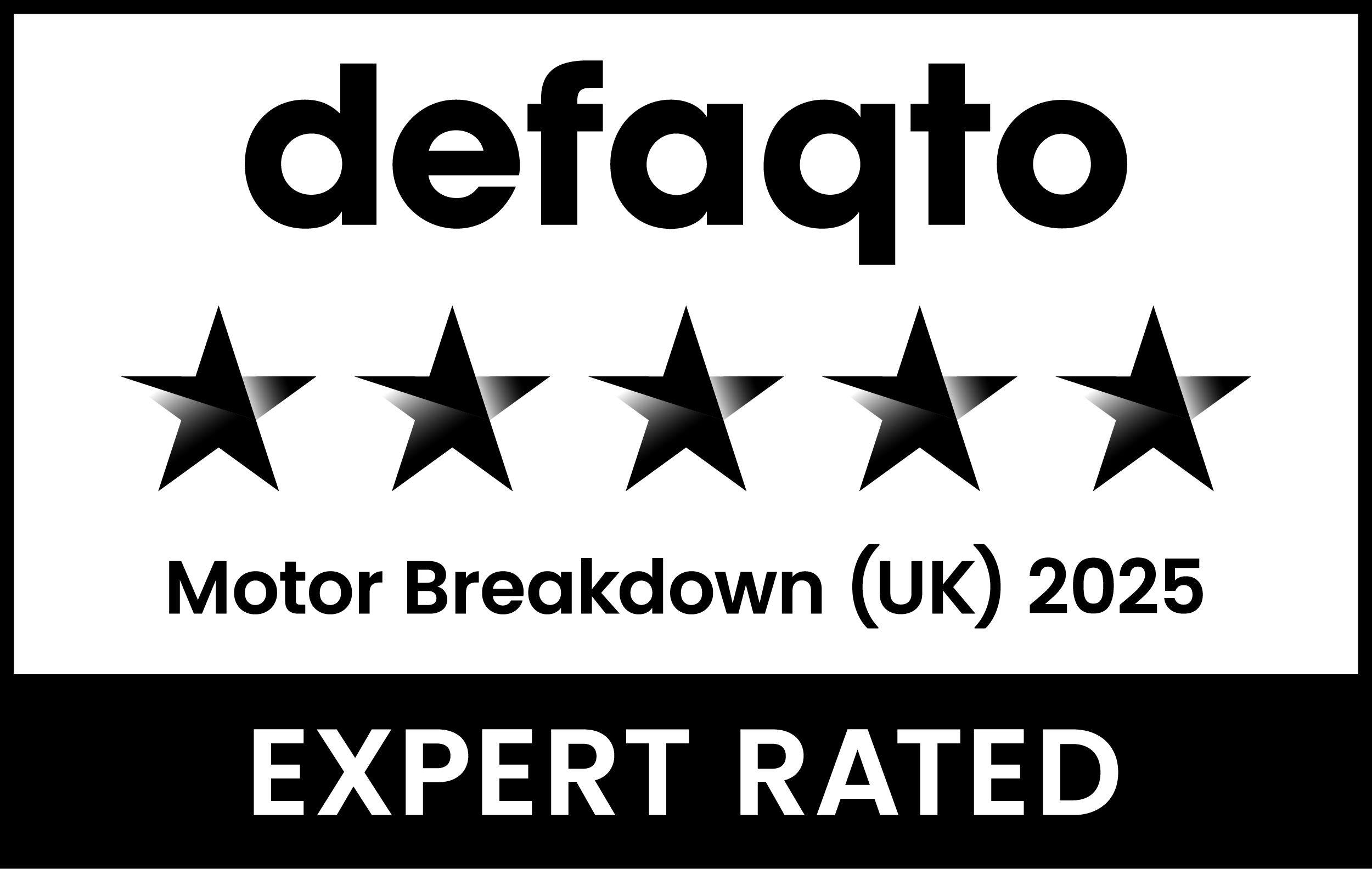With enough practice, revision and preparation, passing your full UK moped/motorbike test should be fairly straightforward. Here we take you through the key points of the test – so you have the best chance of passing, first time round.

Motorcycle Theory test
In the majority of cases, before you can take your practical motorbike test you must pass your theory test. This can only be taken if you have a provisional motorcycle licence.
If you fail the theory test on the first occasion, you can re-sit it as many times as it takes to pass. However, you cannot book the next test until three working days have elapsed.
The theory test contains two sections: multiple choice questions; and hazard perception - during which you will be asked to click the mouse button as soon as you see a hazard developing. The sooner you click, the higher your score will be. You don’t lose points for clicking when there is no hazard, but if you keep on clicking you won’t score any points.
What to take to your motorcycle practical tests
Having passed your theory test, it's time to take modules 1 and 2 of your practical motorbike test.
You must take the following with you to both module tests:
- UK photo card driving licence
- Theory test pass certificate (ask the DVLA for a letter if you have lost this)
- A motorbike or moped
- Compulsory basic training (CBT) certificate – unless you’re taking the test in order to upgrade your full motorcycle licence
- Module 1 test pass certificate – if you’re taking your Module 2 test
Clothing
- Take a motorcycle helmet (British Safety Standards compliant) NB: if you are Sikh and wear a turban this is not necessary.
- Sturdy footwear
- Protective trousers
- Protective jacket
- Motorcycle gloves
Have a paper licence?
You must take along a valid passport together with your paper licence if you haven’t got a photocard licence.
Module 1 off-road test: what to expect
The Module 1 motorcycle test is taken in an off-road location where you can manoeuvre safely.
The test will take around 20 minutes and will include:
- Wheeling the motorcycle or moped
- Using the stand
- Riding a slalom
- Riding a figure of 8
- Performing a U-turn
- Slow-riding
- Cornering followed by a controlled stop
- Cornering followed by an emergency stop
- Cornering followed by hazard avoidance
Hazard avoidance and emergency stop minimum speeds:
- Moped: 19mph
- Motorcycle: 31mph
Many riders fail because they do not keep to the minimum speeds.
Click here to learn how you can prepare to ride your motorcycle in different weather conditions.
Your result
At the end of the test you'll be told if you passed or failed.
You'll be made aware of:
- Any dangerous faults (perilous to you, the examiner, the public or to property)
- Serious faults (which could have led to a dangerous situation)
- Riding faults (not immediately dangerous but could be if the mistake occurred more than once.)
Module 1 pass requirements:
- Zero dangerous or serious faults
- An absolute maximum of 5 riding faults
If you pass, you'll be told of any faults you made and you'll be given your Module 1 pass certificate, which you must produce at your Module 2 test.
If you fail Module 1, you’ll need to wait three working days before you can retake it.
Module 2 on-the-road test: what to expect
Having passed Module 1, you can take the Module 2 test, which will take approximately 40 minutes.
It will include:
- A check to see you can read a number plate from 20 metres away (20.5m for an old-style plate)
- Vehicle safety questions (also known as “show me, tell me”)
- Road riding
- Independent riding
Road riding
This will take place on regular roads (not motorways) and will include normal stops, an angle start, and a hill start.
Directions from your examiner will be given by radio. In most cases you will be followed by the examiner, who will also be on a motorcycle.
You won't know the route the examiner will give you.
Independent riding
This will take around 10 minutes and will ascertain your ability to make independent decisions on the road.
If you go off the designated route you won’t be failed and if you forget the instructions you can ask for them again.
Your result
You'll be told if you have passed or failed after the test.
You'll be made aware of:
- Any dangerous faults (perilous to you, the examiner, the public or to property)
- Serious faults (which could have led to a dangerous situation)
- Riding faults (not immediately dangerous but could be if the mistake occurred more than once.)
Module 2 motorcycle test pass requirements:
- Zero dangerous or serious faults
- An absolute maximum of 10 riding faults
If you pass you'll be told of any faults you made and you'll be given your module 2 motorcycle test pass certificate.
You'll also be asked if you want your full licence sent to your address automatically. If so, you'll need to give the examiner your provisional licence.
Even though you don’t have your physical licence, having passed, you’ll be allowed to ride straight away – without L-plates.
If you failed
You must wait 10 working days before rebooking your Module 2 test.
Tips on how to pass a motorcycle test:
- Keep to the minimum speeds during the Module 1 test. Many people fail this because they anticipate the emergency stops by slowing down too much.
- Make sure you do shoulder and mirror checks during the Module 1 test, even though you are in an off-road area and there are no actual hazards. You must demonstrate that you would make manoeuvres safely in a real-world environment.
- Go to the test centre and watch people do their tests. You’ll learn a great deal on how to pass a motorcycle test.
- Double-check you have all your documents before you leave home – otherwise you will have to rebook and you'll lose the fee you've already paid.
Just beginning your life as a motorcyclist? We've put together some tips for ensuring your early weeks and months on two wheels are both fun and safe.
Download our pdf checklist: How to get your motorbike licence
Frequently Asked Questions
There is a specific process you must go through to get a motorcycle licence, which involves various fees and costs.
Obtaining an A1 licence will cost at least £825, rising to £1,100+ depending on training costs and when you take your tests (evenings or weekends will cost a little more). An A2 licence will cost at least £925 all-in, but could cost in excess of £1,500.
There are several components to getting a motorbike licence. First you must get a provisional licence (£34 when applying online). In most cases (for any moped/motorcycle over 50cc) you must then complete compulsory basic training (CBT), which means you can ride a moped if you’re 16 or over; or a motorcycle up to 125cc and with a power output of up to 11kW if you’re 17 years old or over. A CBT course costs between £120 and £300.
You must then take your full motorbike/moped test within 2 years, or you will need to do the CBT again.
Before you can take the tests, you will need some riding experience, either from a friend/relative (which must be unpaid by law), or more likely, from a motorcycle training school. An A1 licence course costs between £400-£600; an A2 licence course costs between £500-£1,100; and a direct access scheme (DAS) course costs between £690-£1,150 (depending on the course length)
Whether you are planning to get a moped or a motorbike licence, the following test costs will apply: The theory test is £23; Module 1 motorcycle test (off-road) is £15.50; Module 2 motorcycle test (on-road) is £75 (weekdays) or £88.50 (weekends, evenings, bank holidays); Extended test for disqualified riders (on-road) is £150 (weekdays) or £177 (weekends, evenings, bank holidays).
Aside from the compulsory basic training (CBT) course (which costs between £120 and £300), motorcycle lessons are usually sold as packages. An 8-hour package of lessons starts at around £320, while 16 hours would start at around £640. Fees depend on the provider, your location etc.
Note that you would need around 16 hours of training to be ready for the tests.
The motorcycle theory test costs £23 (whether taken on a weekday, evening, weekend or bank holiday).
Aside from the theory test (£23), a Module 1 motorcycle test (off-road) will cost £15.50; a Module 2 motorcycle test (on-road) will cost £75 (weekdays) or £88.50 (weekends, evenings, bank holidays); and an extended test for disqualified riders (on-road) will cost £150 (weekdays) or £177 (weekends, evenings, bank holidays).




